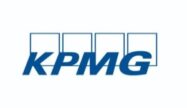SAP Audit Management
Filter By
Browse By
- SAP Analytics and AI
- SAP Application Development and Integration
- All SAP Application Development and Integration
- SAP ABAP
- SAP ABAP Development Tools
- SAP ABAP Test Cockpit
- SAP API Management
- SAP BAPI
- SAP Basis
- SAP BRF
- SAP Business Application Studio
- SAP CMS
- SAP Design Studio
- SAP Development Tools
- SAP DevOps
- SAP EAI
- SAP EDI
- SAP Extension Suite
- SAP Fiori
- SAP Fiori Elements
- SAP Integration Suite
- SAP Low Code Application Development
- SAP Low Code Automation
- SAP Netweaver
- SAP Release Management
- SAP UI5
- SAP Web Application Server
- SAP Web IDE
- SAP Business Process Management
- SAP Center of Excellence
- SAP CIO
- SAP Customer Experience
- SAP Data and Data Management
- All SAP Data and Data Management
- SAP BW
- SAP BW/4HANA
- SAP Crystal Reports
- SAP Data Archiving
- SAP Data Center
- SAP Data Governance
- SAP Data Integration
- SAP Data Migration
- SAP Data Quality
- SAP Data Services
- SAP Data Strategy
- SAP Data Visualization
- SAP Data Warehouse Cloud
- SAP DMS
- SAP Document Control
- SAP EIM
- SAP ETL
- SAP ETL Tools
- SAP HANA
- SAP HANA Administration
- SAP HANA Deployment Infrastructure
- SAP HANA Studio
- SAP Master Data
- SAP Master Data Governance
- SAP MDM
- SAP Enterprise Architect
- SAP Enterprise Asset Management
- SAP ERP
- SAP Finance
- All SAP Finance
- SAP Accounting
- SAP AR AP
- SAP Asset Accounting
- SAP Billing Systems
- SAP BPC
- SAP BRIM
- SAP Cash Management
- SAP Central Finance
- SAP Controlling
- SAP COPA
- SAP Cost Center Accounting
- SAP Currency Risk
- SAP e-invoicing
- SAP FICO
- SAP Finance Automation
- SAP Advanced Financial Closing
- SAP Financial Consolidation
- SAP Financial Planning
- SAP FX Risk
- SAP General Ledger
- SAP Global Tax Management
- SAP Hyperion
- SAP Order to Cash
- SAP Payment Processing
- SAP Profitability Analysis
- SAP Rebate Management
- SAP S/4HANA Finance
- SAP SWIFT Compliance
- SAP Treasury Management
- SAP Universal Journal
- SAP Governance Risk and Compliance
- SAP Human Capital Management
- SAP Intelligent Technologies
- SAP Platform and Technology
- All SAP Platform and Technology
- SAP Business Technology Platform
- SAP Cloud
- SAP Cloud Connector
- SAP Cloud Integration Platform
- SAP Cloud Migration
- SAP Cloud Platform
- SAP Cloud Providers
- SAP Cloud Strategy
- SAP Digital Signature
- SAP Container Platform
- SAP HANA Enterprise Cloud
- SAP Digital Asset Management
- SAP Smart Forms
- SAP HEC
- SAP Digital Integration Hub
- SAP Hyperscalers
- SAP Infrastructure
- SAP Messaging
- SAP Quality and Testing
- SAP Security
- SAP Spend Management
- SAP Supply Chain Management
- All SAP Supply Chain Management
- SAP APO
- SAP Asset Management
- SAP Business Network
- SAP Digital Manufacturing Cloud
- SAP Digital Twin
- SAP EWM
- SAP IBP
- SAP Inventory Management
- SAP Label Printing
- SAP Logistics
- SAP Manufacturing
- SAP Manufacturing Automation
- SAP MES
- SAP MII
- SAP MM
- SAP MRO
- SAP MRP
- SAP Order Management
- SAP Plant Maintenance
- SAP PLM
- SAP Production Planning
- SAP S&OP
- SAP SD
- SAP SPM
- SAP Supply Chain Planning
- SAP Track and Trace
- SAP Transportation Management
- SAP System Administration
What is Audit Management?
Audit management is an important process for companies looking to stay ahead of external and internal audits, stay compliant, and save time when it comes to auditing. Audit management seeks to correctly implement board-approved audit directives.
What is Audit Management?
Audit management is an important process for companies looking to stay ahead of external and internal audits, stay compliant, and save time when it comes to auditing. Audit management seeks to correctly implement board-approved audit directives.
What is SAP Audit Management?
SAP Audit Management can help ensure company processes around SAP and the data it contains are followed. Struggling to meet audit standards and stay compliant can have major consequences for companies — from external fines to the breakdown of internal processes. Staying on top of audit management requires work and documentation. If done manually, it can be an arduous process with a high potential for error. That’s where companies turn to automation and audit assistant through technology.
Audit management software may include some or all of the following features:
- Risk evaluation
- Audit metrics reporting and dashboarding
- Digitization of audit documents
- Audit report automation
- Issues tracking and monitoring
Vendors such as Protiviti and RSM provide audit management solutions that seek to automate much of the audit management process. Additionally, tax-focused vendors such as Vertex have tools that automate compliance, which will ultimately making audits easier through better reporting and fewer issues.
Key Considerations for SAPinsiders:
- In our recent GRC research, we found rapid changes within compliance and data privacy regulations to be a top driver. However, only about a quarter of companies surveyed said they were looking to grow internal audit as a skillset. This suggests that many companies have what they need for internal audits — if your company does not, you may be falling behind.
- In that same research, we found audit management to be one of the most used GRC solutions, in place at over half of organizations. Improving GRC automation was a top strategy, while facilitating audit planning and performance was also a top strategy. Leading companies are prioritizing audit planning and performance and looking to automate.
- Audit your audit planning process. Regulations around data privacy have made major changes in recent years, and regulatory requirements are likely to continue to change more frequently than we’ve seen before. Planning for audits and conducting regular internal audits is important, and you may need to find a way to be more agile to stay compliant. Of course, getting GRC processes streamlined and consistent in the first place will also help audit planning.
355 results
-

KPMG and Microsoft Partner to Enhance Professional Services with AI
Reading time: 2 mins
KPMG and Microsoft announced they are expanding their longstanding partnership with a multibillion-dollar commitment in Microsoft’s Cloud and AI offerings over the next five years. KPMG said the partnership will provide a growth opportunity of more than $12 billion. As one of the world’s largest professional services providers, KPMG’s plan to infuse AI into many…
-

ToggleNow helps solution provider address an audit challenge
Reading time: 1 mins
In today’s digital landscape, effective Segregation of Duties (SoD) management within SAP is vital, especially for global energy firms navigating complex role structures and SoD conflicts. Our tailored approach involves streamlining processes, standardizing authorizations, and conducting risk analysis, slashing risks by up to 95%. Implementing SoD-free role templates and monitoring controls ensures audit readiness and…
-

Promenta’s SAP Journal Entry Workflow Solution for Automated Financial Process
Reading time: 3 mins
Automating the SAP Journal Entry Workflow enhances financial close efficiency and accuracy by minimizing manual data entry errors, ensuring compliance, and supporting customizable approval processes, thus enabling finance teams to achieve better oversight and reduce audit risks. Promenta’s SAP Journal Entry Workflow provides a fast, flexible solution that integrates with SAP systems, ensuring compliance and…
-
-

SAP GRC Implementations: Hidden Challenges That Undermine ROI
Reading time: 2 mins
SAP GRC’s potential is often squandered by organizations due to flawed assumptions and poor design strategies, leading to inefficiencies and increased risks, with key pitfalls including a lack of role design strategy, improper use of automated controls, and misuse of Firefighter IDs.
-

 Premium
Premium
Start Your Segregation of Duties Risk Mitigation Smart — at the Single Role Level
Reading time: 12 mins
Discover key tools and process steps that assist in the remediation of risks identified at the single role level by SAP BusinessObjects Access Control Risk Analysis and Remediation. Key Concept Risk Analysis and Remediation (RAR) is part of SAP BusinessObjects Access Control. This capability helps all key stakeholders work in a collaborative manner to achieve...…
-

 Premium
Premium
6 Controls to Make Your Company’s Order-to-Cash Processes More Secure
Reading time: 11 mins
Learn a few selected application controls in the order-to-cash area and their importance from an audit perspective. Understand mitigation measures in case these controls are inadequate. Key Concept Maintaining robust safeguards and controls around your organization’s revenue recognition processes is critical not only for accurate financial reporting but also to ensure that you are prepared...…
-

 Premium
Premium
10 Tips to Ensure Compliance Doesn’t Slip After a GRC 10.0 Go-Live
Reading time: 9 mins
When you are designing controls as part of an implementation of version 10.0 of SAP BusinessObjects GRC solutions, give some thought about how your organization will be able to maintain levels of compliance six months or one year later. It is easy to become noncompliant almost immediately post go-live. These best practices can help you...…
-
-

 Premium
Premium
Designing Effective Mitigating Control
Reading time: 10 mins
Because mitigations are normally detective controls, it’s very important that they are designed in a way to maximize their effectiveness. Learn the key concepts for designing, documenting, implementing, testing, and monitoring an effective mitigating control. In addition, examples show how you can use SAP BusinessObjects Access Control risk analysis and remediation to help document and...…
-

 Premium
Premium
Dodd-Frank Act: Standardize Risk Management Processes with SAP BusinessObjects Risk Management 10.0
Reading time: 17 mins
Ensure that your enterprise’s risk management procedures comply with the Dodd-Frank Act’s requirements pertaining to the management of systemic risks by using SAP BusinessObjects Risk Management 10.0. It supports the five phases of risk management. Key Concept The Dodd-Frank Act was signed into law in July 2010 in response to the 2007 US financial crisis....…
-

 Premium
Premium
Database Statistics Reports Monitor the Size and Scope of Personnel Development Tables
Reading time: 15 mins
The output of standard R/3 reports that monitor the Personnel Development database can shed light on areas that may benefit from cleanup of excess objects and infotypes or reduction of table size. Check out four of the reports to see which ones best meet your needs. Key Concept Database statistics reports are delivered as standard...…
Become a Member
Unlimited access to thousands of resources for SAP-specific expertise that can only be found here.
Become a Partner
Access exclusive SAP insights, expert marketing strategies, and high-value services including research reports, webinars, and buyers' guides, all designed to boost your campaign ROI by up to 50% within the SAP ecosystem.
Upcoming Events
Related Vendors
Your request has been successfully sent


